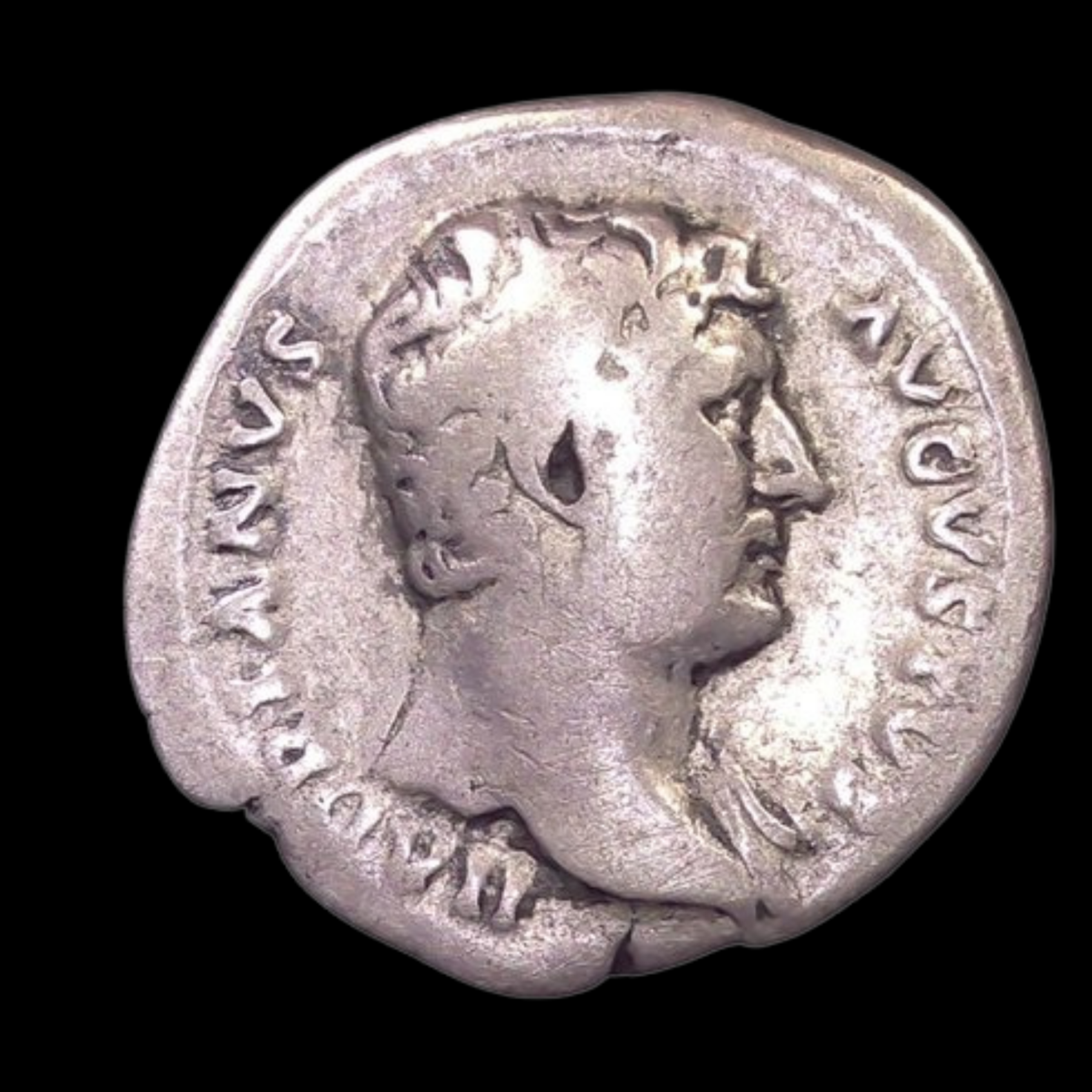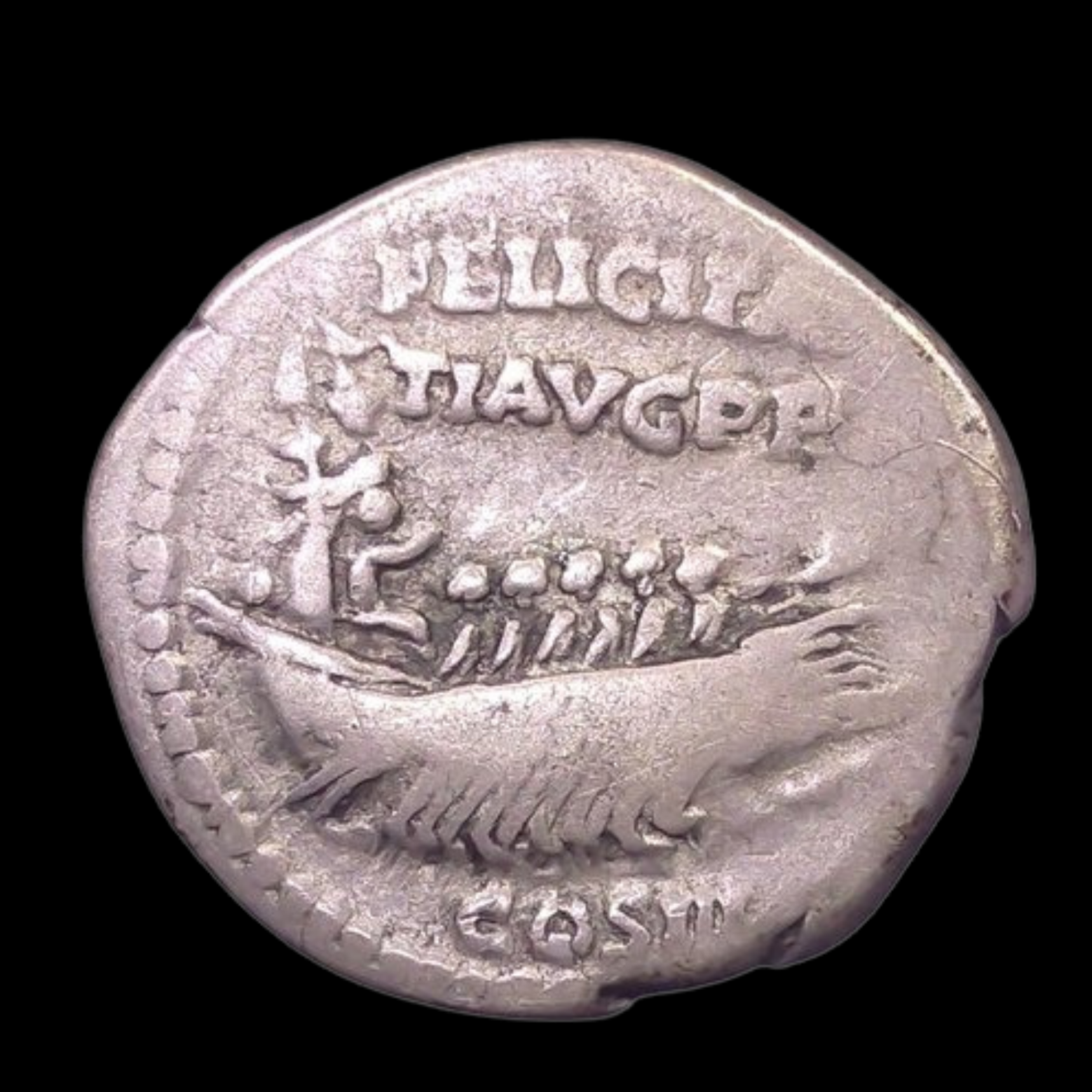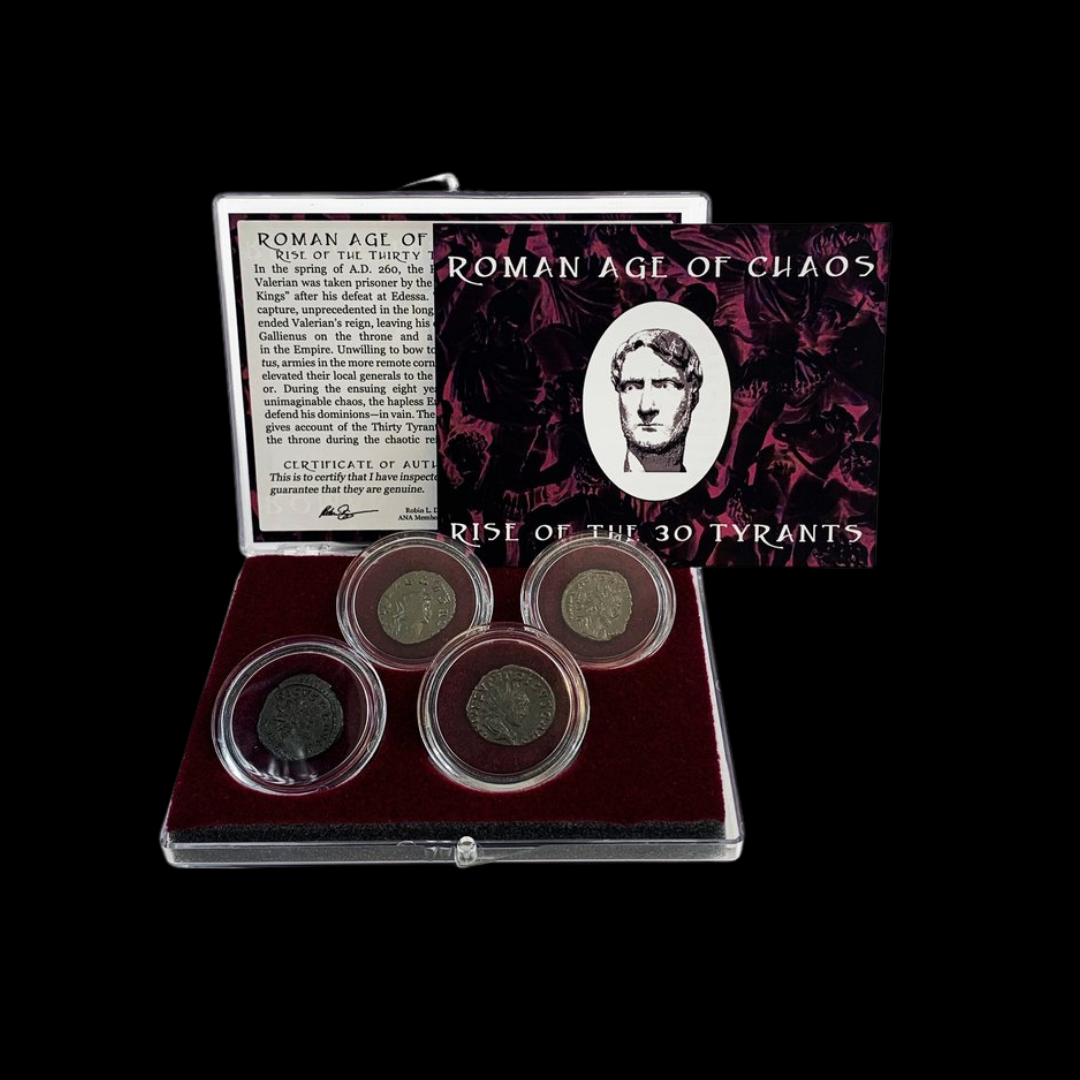 Image 1 of 5
Image 1 of 5

 Image 2 of 5
Image 2 of 5

 Image 3 of 5
Image 3 of 5

 Image 4 of 5
Image 4 of 5

 Image 5 of 5
Image 5 of 5






Roman Bronze Of Magnus Decentius (about 1,670-1,675 years ago)
The coins shown are representative examples of the grade and type, but not the actual specimens for sale. For details on NGC’s grading standards and definitions, please refer to our NGC Grading page.
This bronze coin was issued by Magnus Decentius, who was appointed Caesar (junior emperor) by his brother Magnentius during their rebellion against Emperor Constantius II. Such coins from short-lived usurpers are relatively rare and provide important evidence of the political fragmentation during the mid-4th century.
Coin Description:
Front side: Profile portrait of Decentius, likely wearing an imperial diadem or laurel wreath, with his name and titles in Latin
Back side: Probably displays common 4th-century imperial imagery such as victory figures, military standards, or Christian symbols
Technical Details:
Bronze composition (copper alloy)
AE denomination (bronze coinage)
NGC certified (Numismatic Guaranty Corporation)
Minted between 350-353 CE in western imperial mints controlled by Magnentius
Condition: Certified by NGC, specific grade not provided
Historical Significance: This coin represents one of many usurpation attempts that plagued the Roman Empire during the 4th century. When Magnentius rebelled against Constantius II in 350 CE, he appointed his brother Decentius as Caesar to help control Gaul (modern France). After three years of civil war, their forces were defeated, and both committed suicide rather than face capture. Their brief rebellion illustrates the chronic political instability that weakened the Western Roman Empire in the decades before its eventual collapse.
The coins shown are representative examples of the grade and type, but not the actual specimens for sale. For details on NGC’s grading standards and definitions, please refer to our NGC Grading page.
This bronze coin was issued by Magnus Decentius, who was appointed Caesar (junior emperor) by his brother Magnentius during their rebellion against Emperor Constantius II. Such coins from short-lived usurpers are relatively rare and provide important evidence of the political fragmentation during the mid-4th century.
Coin Description:
Front side: Profile portrait of Decentius, likely wearing an imperial diadem or laurel wreath, with his name and titles in Latin
Back side: Probably displays common 4th-century imperial imagery such as victory figures, military standards, or Christian symbols
Technical Details:
Bronze composition (copper alloy)
AE denomination (bronze coinage)
NGC certified (Numismatic Guaranty Corporation)
Minted between 350-353 CE in western imperial mints controlled by Magnentius
Condition: Certified by NGC, specific grade not provided
Historical Significance: This coin represents one of many usurpation attempts that plagued the Roman Empire during the 4th century. When Magnentius rebelled against Constantius II in 350 CE, he appointed his brother Decentius as Caesar to help control Gaul (modern France). After three years of civil war, their forces were defeated, and both committed suicide rather than face capture. Their brief rebellion illustrates the chronic political instability that weakened the Western Roman Empire in the decades before its eventual collapse.





















